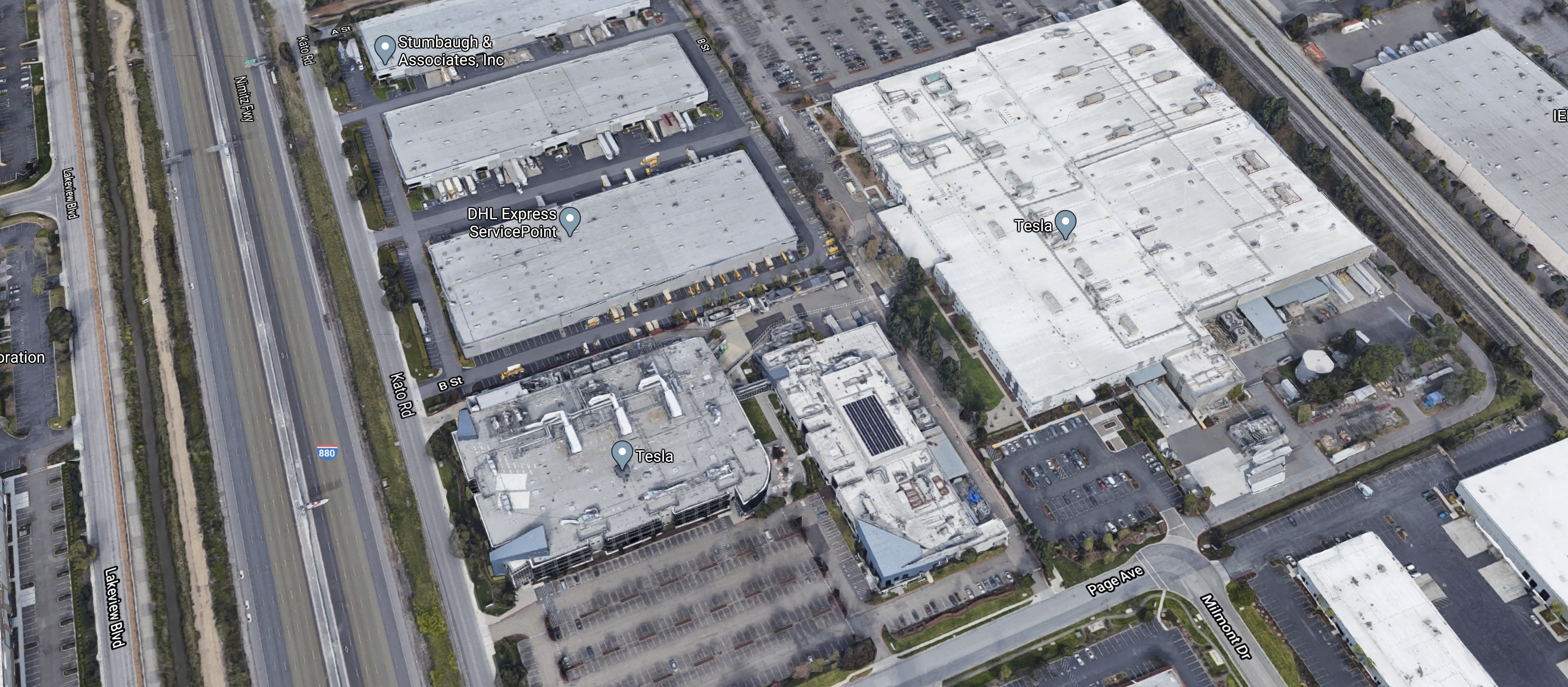Tesla has acknowledged the Roadrunner project publicly for the first time and revealed more about the status of battery production in Fremont.
Earlier this year, Electrek has exclusively revealed Tesla’s secret “Roadrunner” project, which consists of its in-house designed battery cell manufacturing system to increase production volume and reduce cost.
Now Tesla has acknowledged the project as they are seeking approval to build a second floor at their “Tera battery manufacturing facility” hosting the Roadrunner project in Fremont.
They wrote in an application with the city of Fremont filed last quarter (hat tip to @jpr007 for the filing):
To accommodate new battery manufacturing equipment and R&D space (known as ROADRUNNER), the Project proposes to construct an additional floor area of approximately 21,485 square feet at the second floor (covering a portion of the central space that is open to the second floor roof — see Figure 4) and to add an additional, smaller approximately 8,260-square-foot third floor above (see Figure 5). These improvements will increase the total floor space of the existing Kato building by approximately 29,745 square feet (to a total of 156,057 square feet), but will not change the footprint of the building or its exterior facades (see Figure 6). No grading or excavation is necessary for these improvements, and nearly all construction work will be conducted internally within the existing building. The Project will also add a number of rooftop mechanical equipment (e.g., air handlers, HVAC systems and fans) that support the new battery manufacturing operations. Once this internal floor space is constructed, Tesla will move in the new equipment that supports its expanded battery manufacturing and R&D operations.
The facility is located down the road from the Fremont factory at the intersection of Kato Road and Page Avenue:


Tesla doesn’t elaborate on the volume output of the battery manufacturing system, but it is expected to be somewhat significant, considering it plans to operate the production line 24/7 with four shifts of up to 100 workers.
Tesla wrote in the application:
The remaining 400 employees will work in shifts, such that there are 100 employees working at manufacturing and production operations at any given time, all day, every day. Shifts change at 6 a.m. and 6 p.m. daily. The shifts operate such that 100 employees work day shifts in the first half of the week, 100 employees work night shifts for the first half of the week, 100 employees work day shifts during the second half of the week, and 100 employees work night shifts during the second half of the week.
Furthermore, as part of the project, Tesla is asking for a significant increase in power capacity at the location:
Under the proposed Project, operational electrical consumption is projected to increase to nearly 92,800 MWh/yr, or an increase of approximately 72,800 MWhr/yr. The existing electrical demands of the Tera battery manufacturing operations and R&D functions within both buildings will continue. The increased electrical consumption is attributable to the electrical energy demands of the new technology battery manufacturing equipment (Roadrunner). This equipment is assumed to operate 24 hours per day, for 365 days per week (see Table 1, Attachment 1.6-A).
The automaker is also disclosing several toxic materials that will be used as part of the project.
Here’s part of the list:
- Aluminum Cobalt Lithium Nickel Oxide
- Titanium Butoxide
- Lithium Nickel Manganese Cobalt Oxide
- Cobalt Sulfate
- Lithium Hydroxide Monohydrate
- Manganese Sulfate
- Nickel Sulfate
- Precursor (NCA-Oxide or NCMOxide)
As you can see, those are all materials used in battery cell production.
Tesla plans to allow tours of the new facility at its Battery Day, which is now “tentatively” planned for September 15.
Here’s the full initial study for the new building application at Tesla’s Tara Battery Manufacturing facility for the project Roadrunner:
Electrek’s Take
In short, Tesla is currently expanding battery cell production operations at the facility.
I think this would still qualify to be under their research and development effort.
Tesla is mainly using the location to test the new cell manufacturing equipment that they are designing and building, but I think it could still result in a significant production capacity — at least in the five figures in kWh and maybe getting close to six figures?
What do you think? Let us know in the comment section below.
FTC: We use income earning auto affiliate links. More.
Subscribe to Electrek on YouTube for exclusive videos and subscribe to the podcast.